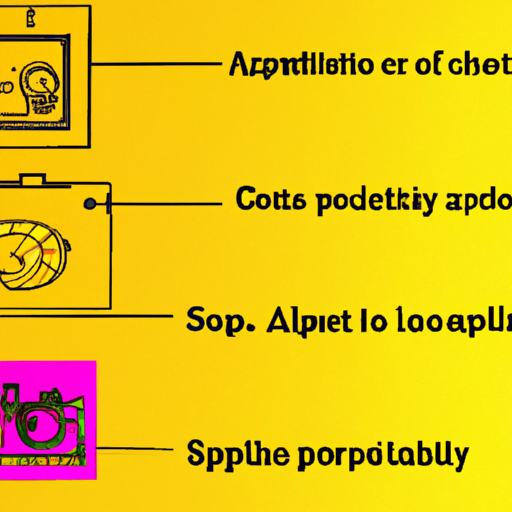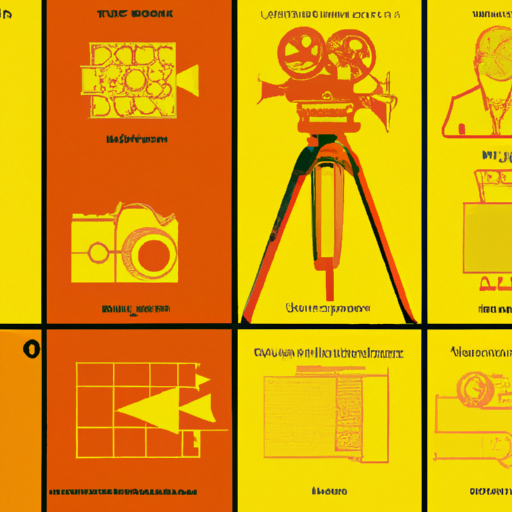
-
Table of Contents
- Infographics: Communicating Complex Ideas Visually
- The Power of Infographics
- The Benefits of Using Infographics
- Effective Use of Infographics
- 1. Define Your Objective
- 2. Know Your Audience
- 3. Keep It Simple
- 4. Use Visual Hierarchy
- 5. Choose the Right Visual Elements
- 6. Tell a Story
- Case Studies: Successful Infographics
- 1. The Evolution of the Web
- 2. The Benefits of Exercise
- Conclusion
Infographics: Communicating Complex Ideas Visually

Infographics have become an increasingly popular tool for communicating complex ideas in a visually appealing and easily understandable way. With the rise of digital media and the abundance of information available, infographics offer a way to cut through the noise and present information in a concise and engaging manner. In this article, we will explore the power of infographics, their benefits, and how they can be effectively used to communicate complex ideas.
The Power of Infographics
Humans are visual creatures. We process visual information much faster than text, and visuals have a greater impact on our memory and understanding. Infographics leverage this innate preference for visuals to present complex ideas in a way that is easily digestible and memorable.
When faced with a wall of text or a lengthy report, it can be overwhelming for readers to extract the key information and understand the main points. Infographics, on the other hand, use a combination of text, images, and data visualizations to present information in a visually appealing and organized manner. This makes it easier for readers to grasp complex concepts and retain the information.
Furthermore, infographics have the ability to simplify complex ideas by breaking them down into smaller, more manageable chunks. By using visual elements such as charts, graphs, and icons, infographics can distill complex data and concepts into easily understandable and relatable visuals.
The Benefits of Using Infographics
There are several benefits to using infographics as a communication tool:
- Increased Engagement: Infographics are visually appealing and capture the attention of readers. They are more likely to be shared on social media platforms, increasing the reach and engagement of the content.
- Better Comprehension: By presenting information in a visual format, infographics make it easier for readers to understand complex ideas. Visuals help to simplify information and enhance comprehension.
- Improved Retention: Studies have shown that people remember information better when it is presented in a visual format. Infographics help to improve information retention and recall.
- Increased Accessibility: Infographics can be easily shared and accessed online, making them a convenient way to communicate complex ideas to a wide audience.
- Enhanced Branding: Well-designed infographics can help to establish a brand’s identity and create a positive impression among readers. They can be used as a marketing tool to promote a brand’s expertise and thought leadership.
Effective Use of Infographics
While infographics offer many benefits, it is important to use them effectively to ensure maximum impact. Here are some tips for creating and using infographics:
1. Define Your Objective
Before creating an infographic, it is important to clearly define your objective. What message do you want to convey? What information do you want to highlight? By having a clear objective in mind, you can design an infographic that effectively communicates your message.
2. Know Your Audience
Understanding your target audience is crucial when creating an infographic. Consider their level of knowledge on the topic, their preferences, and their needs. This will help you tailor the content and design of the infographic to resonate with your audience.
3. Keep It Simple
One of the key advantages of infographics is their ability to simplify complex ideas. Avoid overwhelming your audience with too much information or cluttered visuals. Keep the design clean and uncluttered, focusing on the key points you want to convey.
4. Use Visual Hierarchy
Visual hierarchy is the arrangement of elements in a way that guides the viewer’s attention. Use size, color, and placement to emphasize important information and guide the reader through the infographic. This will help ensure that the main message is effectively communicated.
5. Choose the Right Visual Elements
Infographics can include a variety of visual elements such as charts, graphs, icons, illustrations, and photographs. Choose the visual elements that best represent your data and support your message. Use colors and fonts that align with your brand identity and create a visually cohesive design.
6. Tell a Story
Infographics are not just about presenting data; they can also tell a story. Structure your infographic in a way that flows logically and guides the reader from one point to another. Use headings, subheadings, and captions to provide context and guide the reader through the information.
Case Studies: Successful Infographics
Let’s take a look at some real-world examples of successful infographics:
1. The Evolution of the Web
This infographic by Information is Beautiful presents the evolution of the web from its inception to the present day. It uses a timeline format with icons and illustrations to represent key milestones in the development of the web. The infographic effectively communicates a complex idea in a visually engaging and easy-to-understand way.
2. The Benefits of Exercise
This infographic by the American Heart Association presents the benefits of exercise on the human body. It uses a combination of text, icons, and illustrations to highlight the positive effects of exercise on various organs and systems. The infographic effectively communicates the health benefits of exercise in a visually appealing and informative manner.
Conclusion
Infographics are a powerful tool for communicating complex ideas visually. They leverage our innate preference for visuals to present information in a way that is easily digestible and memorable. By using a combination of text, images, and data visualizations, infographics simplify complex ideas and enhance comprehension. They offer several benefits, including increased engagement, better comprehension, improved retention, increased accessibility, and enhanced branding. To use infographics effectively, it is important to define your objective, know your audience, keep it simple, use visual hierarchy, choose the right visual elements, and tell a story. By following these guidelines and learning from successful case studies, you can create compelling infographics that effectively communicate complex ideas.
